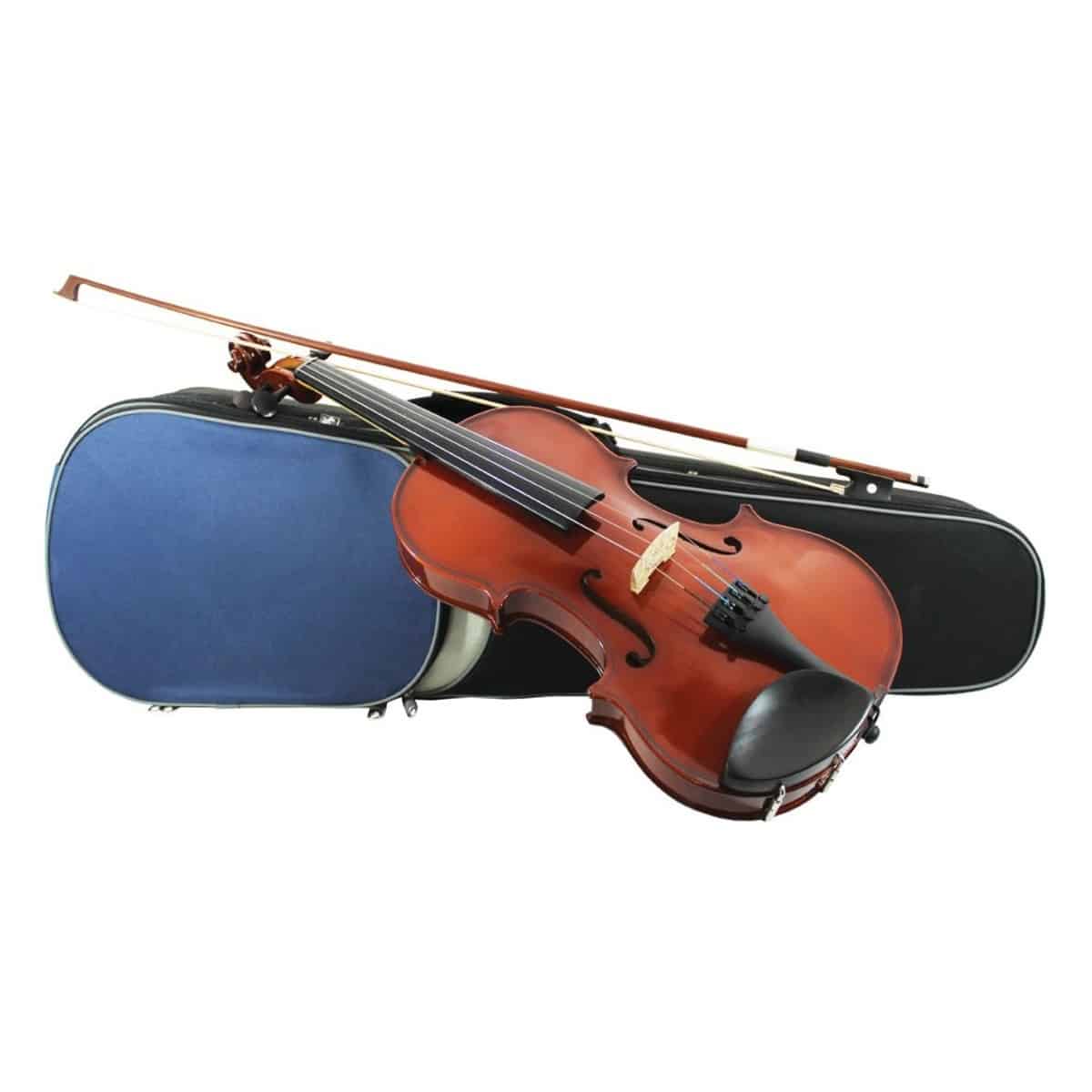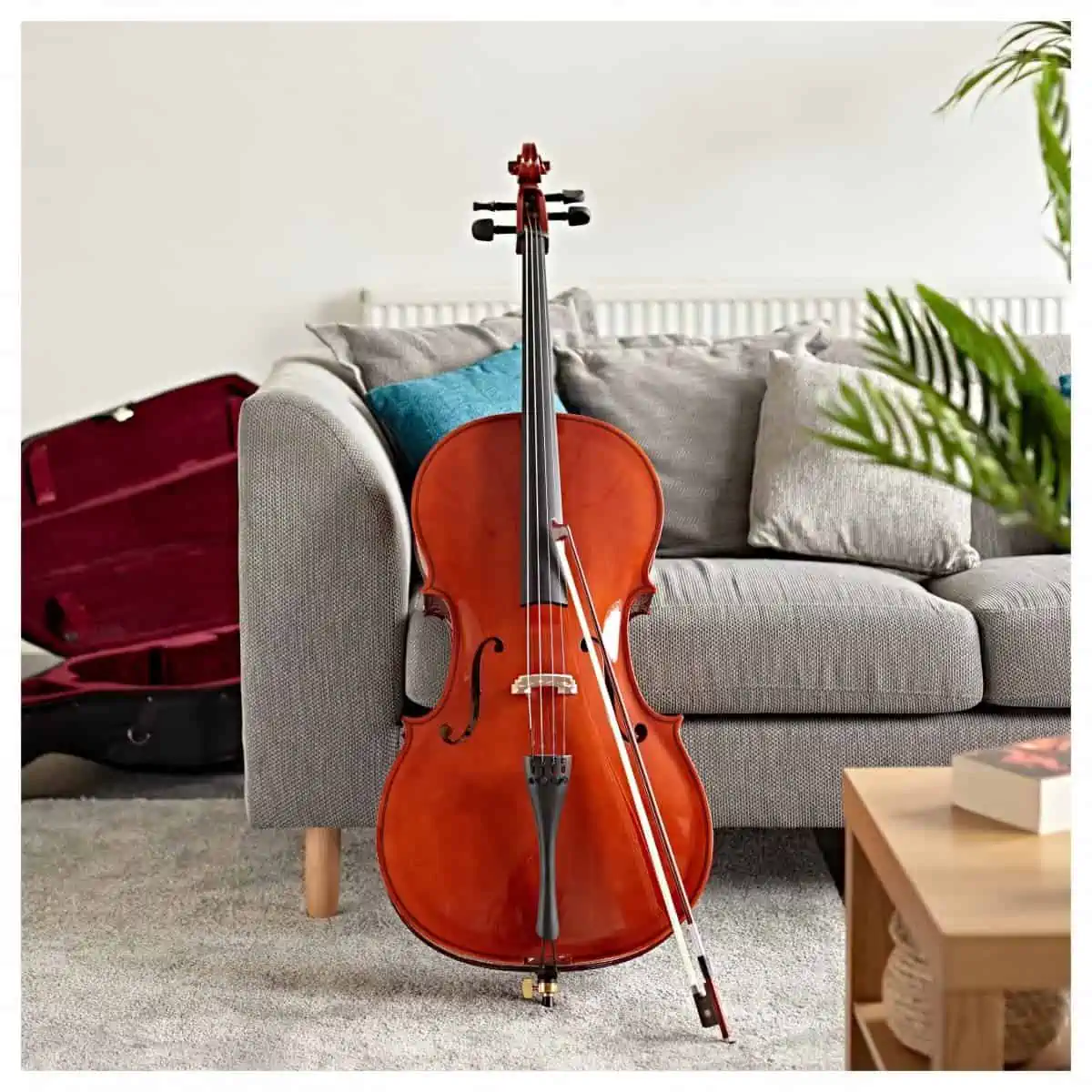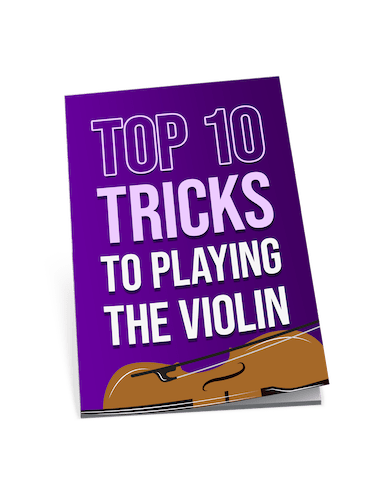If you’re just starting out and want to find the easiest string instrument to pick up, you’re exactly where you need to be. The cheerful notes of a ukulele might draw you in, while the enchanting strum of a harp could capture your heart. Each instrument offers its own unique blend of fun and charm.
Some need more time and practice, while others are easier to play and excite you. It’s all about finding the one that matches your style and how much you know about music.
In this article, I’ll talk about some good string instruments for beginners. Whether you want to impress your friends or enjoy playing music by yourself, you’ll find an instrument here that fits what you want to do.
Ready to start? Let’s begin this musical adventure together!
The String Family
You might wonder, “What is the easiest string instrument to learn?” When it comes to learning string instruments, the answer to this question often varies depending on an individual’s personal preferences and previous musical experiences.
All four instruments in the string family (violin, viola, cello, and double bass) normally have four strings, and are most often played using a bow but occasionally also by plucking the strings like a guitar or bass guitar. They are all available in a variety of sizes to suit beginners of any age.
Violin
The violin is the smallest and highest-sounding of all the string instruments. It is most commonly played in orchestras and other classical music ensembles but can also be seen in popular music and musical theatre. It can be one of the best instruments to learn for children due to its small size and popularity in groups.
Advantages of learning the violin
- The violin is a small and easily manageable instrument. It is available in a wide range of sizes, so is ideal for children who want to learn an instrument from a young age.
- The violin does not require as much finger strength when getting started as some of the other string instruments.
- Violin is a popular choice within music education, so you will have a wide choice of teachers offering both individual and group lessons, and it should be easy to find a good beginner instrument at an accessible price.
- There are many opportunities for violin players to play in groups, as well as lots of excellent learning materials for beginners of any age.
- Violinists learn to read the treble clef, which is a useful transferable skill for a wide range of other musical activities, such as music theory.
Disadvantages of learning the violin
- The small size of the violin requires highly accurate movement in both hands which can challenge the physical coordination of some beginners.
- It is difficult to be able to play with a good sound straight away and early practice sessions may require a lot of patience!
- Many beginner instruments are of poor quality and can be easily damaged.
- As a very popular instrument, learning the violin can be competitive and it can be difficult to win places in the most prestigious groups later on.
- Some beginners may find the high pitch of the violin unappealing to listen to.

For a starter instrument, we recommend the Primavera 100 – it comes with nearly everything you need, and is a superb price.

COMES WITH: A Case, Bow, And Rosin
FEATURES: Durable Ebony Pegs and Ebonised Fingerboard
primavera 100
When you check the price above, you’ll see there are loads of great places to buy this item. Our personal favorite is Gear4music.
It is the largest music retailer in the UK and fast becoming the most respected online music shop in the US too. Their customer service is excellent, they have competitive prices, really fast shipping, and usually have the longest guarantee.
Most professional musicians use Gear4music, so there is no reason why you shouldn’t too!
- Rosin is included
- Hard case and bow also included
- Ebony fittings - chin rest and tuning pegs
- Easy tuning made possible with fine tuners
- Comes with a two year warranty
- There are none!
The professional musician who wrote this article combined many things,
from the product build, manufacturer’s reputation through to feedback
from other users, to create our famous TedScore™.
Viola
The viola looks like a large violin and is played in the same way, resting on the player’s left shoulder. It makes a slightly lower-pitched sound than the violin and is most commonly seen in orchestras and chamber music groups.
Advantages of learning the viola
- Most violin teachers also offer viola lessons, so it should be easy to start learning.
- As a slightly bigger instrument, the physical coordination between the two hands is easier to learn than the violin for some beginners
- Viola players are much rarer than violinists, and the viola is a great instrument to start playing if you want to play in a group. Viola players are regularly in demand by orchestras and groups at every level
- Some beginners- especially adults- find the deeper sound of the viola more attractive than the violin, especially in the early stages of learning
Disadvantages of learning the viola
- Some beginners find it difficult to hold a bigger instrument under the chin comfortably
- It can be challenging to find a good-quality beginner instrument
- Good quality learning material is harder to find, and can be more expensive
- There are fewer opportunities to play solo as a viola player compared to the other string instruments
- Viola players do not learn to read treble clef until a relatively advanced stage. Their music is written in alto clef which is not commonly used in other musical contexts.

The Stentor brand is one of the most widely recognised student brands on the market. They’re well built, and pretty affordable; just like this Student 2 model…

COMES WITH: Ebony Pegs and Fingerboard
FEATURES: Carved From Solid Tonewoods
Stentor Student Viola
When you check the price above, you’ll see there are loads of great places to buy this item. Our personal favorite is Gear4music.
It is the largest music retailer in the UK and fast becoming the most respected online music shop in the US too. Their customer service is excellent, they have competitive prices, really fast shipping, and usually have the longest guarantee.
Most professional musicians use Gear4music, so there is no reason why you shouldn’t too!
- Includes a hard case to protect the violin, and a bow
- Quality wood used
- Fine tuners included
- Aesthetically pleasing - dark varnish finish
- The bow is made from horse hair and has an ebony frog
- Shoulder rest is not included
- You may want to replace the factory strings with better quality strings as you or your child progress so that a warmer sound can be achieved
- Rosin is not included
The professional musician who wrote this article combined many things,
from the product build, manufacturer’s reputation through to feedback
from other users, to create our famous TedScore™.
Cello
The cello is the same shape as the violin and the viola, but much larger and even lower in pitch. Instead of being held on the player’s left shoulder, it rests between the player’s knees, supported by an endpin (or “spike”) that sticks out onto the floor. It is often said that of all the instruments, the sound of the cello is closest to that of the human voice.
Advantages of learning the cello
- The cello has an enormous range of pitch from low to high, making it an extremely expressive instrument with many musical possibilities and a huge range of repertoire.
- The cello plays both tunes and accompaniment parts in a wide variety of groups and styles, making it incredibly versatile and offering a varied musical experience for the player.
- The seated playing position is more natural and comfortable for most beginners and Student Cello.
- Although not as popular as the violin, the cello is still a routine element of music education and it should be easy to find a good teacher and a good quality instrument.
- The sound is attractive to many people, even from the earliest stage of learning.
Disadvantages of learning the cello
- A larger instrument can be physically challenging in practice, especially for children who may need support carrying it in the early stages.
- Whilst cellos are readily available, they tend to be more expensive than violins or violas, both to rent and to purchase.
- The cello requires more finger strength and stretches the hand more than violin or viola, which can take a while to develop when learning to play.
- A larger instrument can be difficult to transport, to store, or to practice at home.

If you’re looking for a true starter instrument, then specialist maker Gear4Music can help, with their simply named ‘Student Cello‘. It’ll last the first few years of learning, and it’s very affordable.

COMES WITH: Laminated spruce and basswood body
FEATURES: Coloured silk strings wrappings help learning
Student Cello By Gear4Music
When you check the price above, you’ll see there are loads of great places to buy this item. Our personal favorite is Gear4music.
It is the largest music retailer in the UK and fast becoming the most respected online music shop in the US too. Their customer service is excellent, they have competitive prices, really fast shipping, and usually have the longest guarantee.
Most professional musicians use Gear4music, so there is no reason why you shouldn’t too!
- Includes bow, rosin and hard case
- Includes bow, rosin and hard case
- None
The professional musician who wrote this article combined many things,
from the product build, manufacturer’s reputation through to feedback
from other users, to create our famous TedScore™.
Double Bass
The largest and lowest in pitch of the string instruments, the double bass is even bigger than its player! Like a cello, it is supported on the floor by an endpin, and double bassists can either sit or stand to play. The double bass is an important part of any orchestra, but is equally at home in other styles of music such as jazz, rock, pop, and world.

Advantages of learning
the double bass
- Double bass is one of the best instruments to learn if you want to play with other people, and is always in demand by groups regardless of the type of music.
- Double bass offers the most opportunities to play a wide range of music. Not just classical, but jazz, pop, and world music too.
- There are a wide variety of playing techniques, not just bowing and plucking but also “slap bass” and rockabilly.
- The fingering system is straightforward and easy to learn. It also works on bass guitar, meaning double bass players can readily play notes on both.
- It is one of the easiest musical instruments to achieve a decent sound with straight away.
Disadvantages of learning
the double bass
- Being very large, the double bass may be a difficult to store and transport. You might need a big car!
- The lowest sounds can be difficult to hear, which can make playing in tune challenging when you first get started.
- Younger beginners may be intimidated by the sheer size of the double bass, which will always be bigger than the player- even when playing a correctly sized “mini bass”
- Double bass is a very rare instrument to learn so it can be more challenging to find a teacher, and you may have less choice of teachers in your area
- Whilst double basses are available in a range of sizes for beginners of any age, these can be difficult to source and expensive compared to the other string instruments
- Fewer opportunities to perform solo than the other string instruments
- Good quality learning material can be difficult to find and expensive

COMES WITH: Bow & Hard Case
FEATURES: Triple Hand Lacquered & Varnished Orange-Brown Finish
Deluxe Solid Top Bass
When you check the price above, you’ll see there are loads of great places to buy this item. Our personal favorite is Gear4music.
It is the largest music retailer in the UK and fast becoming the most respected online music shop in the US too. Their customer service is excellent, they have competitive prices, really fast shipping, and usually have the longest guarantee.
Most professional musicians use Gear4music, so there is no reason why you shouldn’t too!
- 2-year warranty & 30-day money-back guarantee
- None
The professional musician who wrote this article combined many things,
from the product build, manufacturer’s reputation through to feedback
from other users, to create our famous TedScore™.
Easiest stringed instrument for a child to learn
In our opinion, the easiest instrument to learn for a child would be the violin or the cello.
They both make a clear sound that is much easier to hear than the viola or double bass, offer many opportunities to perform both solo and in a group, and it is relatively easy to find good quality instruments and excellent violin and cello teachers.
Violin and cello are also the string instruments most commonly offered by schools, making it even easier for children to learn how to play them.
However, any child will find it easy to learn an instrument that they actually like! Allow your child to listen to the sound of each string instrument- there are plenty of videos available on YouTube, or look at our specialist YouTube channel here – and if possible arrange for them to try out the instruments that interest them most.
Easiest stringed instrument for an adult to learn
I always recommend the double bass as the best and easiest string instrument to learn for adults.
It is possible to make fast progress in the early stages, enabling you to participate in groups much sooner than would be the case with any other musical instrument. And as a player of a rare instrument you will always be in demand!
In addition, learning the double bass allows you to access the widest variety of styles and musical techniques, making it a fun instrument to learn to play.
That said, learning double bass is not without many practical considerations, and other musical instruments may make life much easier in that regard. As always, the easiest instrument is the one you like the most!
Tips for choosing which stringed instrument to learn
- Think about the type of music you would like to play. All the string instruments are important in classical music, but some are more versatile than others across a range of genres.
- What kind of sounds do you enjoy? Some people find high-pitched sounds more pleasant than others. Listen to each of the string instruments, try them out if possible, and decide which you prefer.
- Do you want to play by yourself, in a group, or a mixture of both? Viola and double bass players are always in demand by a range of groups, but generally have fewer opportunities to play solo. Cellists have a wonderful solo repertoire and a varied role in most ensembles, playing both melody and accompaniment parts at times. Violinists spend much of their time enjoying the tune….
- Practical considerations! Can you fit a double bass into your car? How would you feel about taking your cello on the bus or train to orchestra each week? How much space at home do you have to practise your new musical instrument?
- Every musical instrument requires consistent practice when learning how to play it, preferably little and often- at least five days per week. However, certain string instruments fit more easily into a busy life than others. For example, violinists often have to spend hours learning complicated music with exposed melodic lines, whereas double bass players usually have a more straightforward part to play in most groups.
Easiest string instrument to learn
Summary
Did you enjoy this article? I hope it has given you a useful and comprehensive idea of what makes the easiest instruments to learn, and will help make your decision to play a musical instrument easier.
Good luck on your string hunt!
FAQ's
No instrument is easy without hard work and regular practice, and there will undoubtedly be challenges whichever musical instrument you learn to play. However, of all the string instruments I think the cello and the double bass are the easiest instruments to learn for beginners. It is possible to make rapid progress in the early stages, and their music in groups tends to be easier.
Violin is definitely one of the hardest instruments to learn to play well. Its small size demands accurate finger work and delicate bow co-ordination that can only be achieved by a lot of practice. Its music is usually amongst the most technically demanding in any group.
It is always best to learn with a teacher if possible! They can provide a helpful structure and motivation that is difficult to achieve when working alone, and prevent you from falling into bad habits that could impede your progress later on. That said, there are many resources online to assist those who are self-taught, and with dedication and hard work it is possible to make a solid start on any instrument. Discover Double Bass (www.discoverdoublebass.com) have a range of particularly high quality video resources for the self-taught beginner, demonstrating many different types of music.
Instruments such as violin and viola, where achieving the correct playing position is highly technical and can cause discomfort when incorrect, are always best to learn with at least some real-life advice!
The easiest musical instrument to learn is the one you like best, and which best fits your own individual musical aspirations. This way, you will be more motivated to put in the time and effort required in order to learn how to play well. This is especially true when choosing an instrument to learn for adults.











Super informative article, Gemma Murray! I’ve always been intimidated by the thought of picking up an instrument at my age, but this guide makes me feel like it’s possible. Thinking the viola might be the way to go for its unique sound. Thanks for the insight!
Kinda surprised to see the disadvantages of learning the double bass mentioned without noting its unique advantages in jazz and orchestral music that aren’t as prominent in other string instruments. Every instrument has its learning curve, but the double bass offers a distinct tonal depth and versatility that shouldn’t be overlooked. Plus, with the right technique, portability isn’t as big of an issue as some make it out to be. Would love to dive deeper into this discussion if anyone’s interested.
thinking of getting my kiddo started on an instrument. read somewhere that the viola is a good start? they’re 8 tho, is that a good age for it? didn’t see it in the article, Gemma Murray, if you’ve got insights, would be cool!
Hey everyone, I’ve been really torn between choosing the violin or the cello to start learning. Saw Gemma’s breakdown of the pros and cons of each, but I’m leaning more towards the cello because of its deeper sound. Is it really harder to start with than the violin? Would love to hear from people who’ve played both.
It’s all about personal preference. I find the violin offers more versatility in genres. Try both if you can before deciding!
Hey, went through that dilemma myself! I found the cello’s posture more natural for me despite its size. Each instrument has its quirks, but passion trumps difficulty. Go for it!
I gave this article to my son and he is an absolute natural! Thank you, Ted’s List!
Hi Barry. I hope your son found it useful?